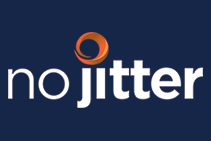Vonage held its first-ever analyst event last week, providing an open and candid opportunity for its senior executives to share accomplishments, goals, and what they see as market challenges.
The timing of this event comes on the heels of a major inflection point for the VoIP pioneer, as sales of its business offerings recently surpassed those of its residential services. Vonage is one of those rare organizations that survived a digital disruption, as its low-cost residential phone service has been hammered by the shift to cellular and the advent of triple and quadruple play offerings from residential service providers that bundle low-cost, unlimited telephony into television, Internet access, and in some cases, wireless services.
All the Pieces in Place
Vonage continues to transform through both acquisitions and organic development, as UC analyst Zeus Kerravala
wrote last week on No Jitter. Its home-grown Vonage Business Cloud (VBC) is now its primary UCaaS offering, while recent acquisitions of Nexmo, NewVoiceMedia, and TokBox have positioned it to own its own communications platform-as-a-service (CPaaS), contact center-as-a-service (CCaaS), and WebRTC-based media service, respectively.
Vonage now has all the pieces in place to develop fully owned offerings, rather than relying on partners for meetings and contact center, as it had in the past. Its reliance on Amazon Web Services (AWS) gives it instant scale and an underlying infrastructure that has provided a high level of reliability. In addition, Vonage SmartWAN, powered by VeloCloud, delivers an SD-WAN capability, providing a high level of network availability, along with a performance and reporting capability integrated into Vonage’s own management portal.
Vonage plays in a crowded UCaaS market. Fellow over-the-top providers like RingCentral and 8x8 have taken similar approaches in building their own platforms. Meanwhile, a wide array of stand-alone, wholesale, and service provider-delivered solutions, built on platforms like Cisco BroadSoft, allows any VAR, service provider, or systems integrator to deliver its own branded and/or managed UCaaS offering.
Bringing It All Together
Vonage’s core differentiation is based on its Nexmo acquisition, providing it with a fully owned CPaaS offering touting more than 700,000 active developers. Vonage continues to sell CPaaS services direct to software vendors looking to add communications to their own applications, competing with the likes of Twilio. At the same time, Vonage is also incorporating Nexmo APIs into its core UCaaS offerings, enabling VBC customers to add communications like SMS messaging and advanced call handling features to their existing applications. Vonage repeatedly touted the programmability aspect of its platform as providing a competitive advantage in the marketplace. In July, Vonage
introduced VonageFlow, a team collaboration/workstream communications capability that, like those offered by competitors, is bundled into its softphone client.
Vonage is still in the early days of its integration of NewVoiceMedia into VBC, but at this point, it represents the only UCaaS provider that owns its own CPaaS, CCaaS, and UCaaS -- though competitors like RingCentral do offer a rich set of APIs to enable communications process integration.
Much of the Vonage story centered on the ability to leverage the integrated platform to support digital customer experience initiatives. At the analyst event, Vonage executives discussed the opportunity for customers to turn each customer engagement into a positive ‘moment of truth’ by incorporating intelligent routing and the ability for agents answering a call to know the context of the caller’s issue -- all accomplished via integrating CRM applications, call routing, and WebRTC-enabled browsers. This story isn’t new; those offering omnichannel contact center solutions tout similar capabilities. But Vonage’s ability to deliver is unique in that it natively has both the contact center platform and the underlying communications components to build application- and messaging-based workflows.
Nemertes’ recently published
global study of digital customer experience (DCX) plans among nearly 700 companies found that 85% already have, or are planning, a digital customer experience initiative. Key focus areas include adding customer engagement channels, automating workflows, and mobile-enabling customer engagements. Success in all of these areas requires integrating contact center, CRM, and mobile services like SMS and social messaging, as well as enabling back-office collaboration to ensure that the right resources are available, at the right time, to address customer engagements.
Vonage is well positioned to succeed in a market in which collaboration in the context of customer engagement is increasingly a core focus area among those with active digital transformation and digital customer engagement strategies. Still, it will face a crowded market, and to gain market share it must continue to differentiate itself through partners, scale, integration of UCaaS, CPaaS, and CCaaS, and platform openness. IT leaders looking for communications partners who can support their DCX should evaluate Vonage, as well as competing offerings, as part of their due diligence.










